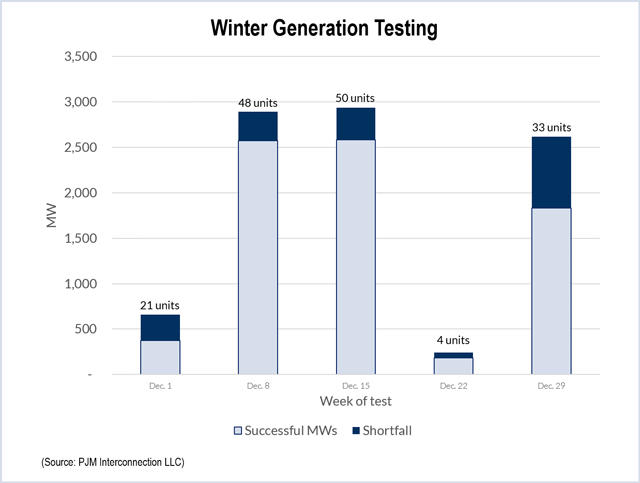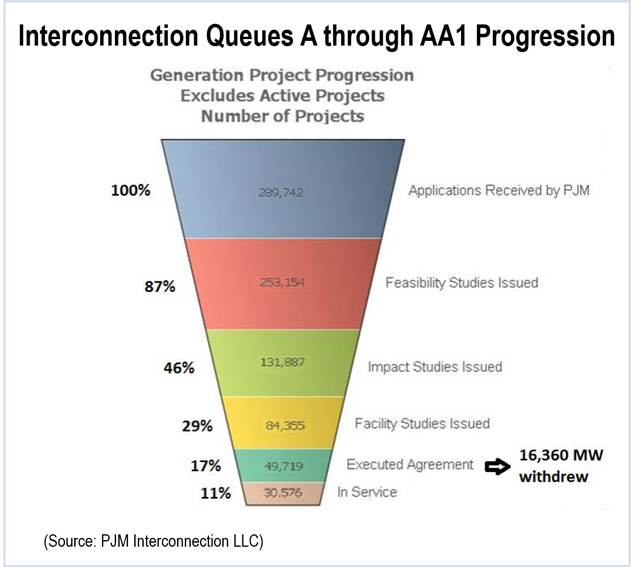The Market Implementation Committee will review modeling practices that PJM said may be shortchanging loads with transmission agreements that pre-date the RTO’s capacity market.
The MIC last week approved an issue charge proposed by Stu Bresler, vice president of market operations.
Bresler said the issue arose last year after a PJM member in Commonwealth Edison’s locational deliverability area (LDA) sought a waiver of PJM’s Reliability Assurance Agreement before last May’s base residual auction.
Bresler was referring to the Illinois Municipal Electric Agency, which won a waiver from the Federal Energy Regulatory Commission regarding its means of serving the Naperville, Ill., portion of its load.
Last week, IMEA filed a second waiver request for May’s 2018/19 BRA.
“The fundamental problem is that when a PJM zone is identified as a potentially constrained LDA (and therefore separately modeled with its own [variable resource requirement] curve), internal resource requirements are triggered that do not recognize or give credit for the capacity transfer capability rights of [load serving entities] that have historic, long-term, firm transmission rights to serve their network loads with external resources,” IMEA wrote in its request (ER15-834).
The MIC approved a problem statement on the issue in December. (See PJM MIC OKs Capacity Transfer Rights Inquiry.)
Market Monitor Joe Bowring questioned the impact of the rule change being considered by PJM. “It’s a broad issue because it creates the possibility of others requesting the same thing,” he said.
Bresler, however, said potential changes would affect an “extremely small population of market participants who find themselves in this situation.”
MIC to Work Synch Reserve Payments Inquiry
The MIC will hold special meetings to consider the Market Monitor’s effort to change compensation for Tier 1 synchronized reserves.
PJM’s Lisa Morelli suggested the approach after briefing the MIC last week about a Jan. 5 education session on the issue. No members objected to her recommendation.
Tier 1 synchronized reserves — all on‐line resources following economic dispatch and able to ramp up at PJM’s request — are paid the Tier 2 synchronized reserve market clearing price whenever the non-synchronized reserve price is more than zero. Bowring said it’s wasteful to pay Tier 1 the same price as Tier 2, because only Tier 2 are subject to penalties for non-performance. (See Monitor: Cut Pay for Tier 1 Synchronized Reserves.)
PJM Posts MISO Price Predictions Before CTS Vote

Last week PJM, which will seek stakeholder approval next month for an interchange trading product with MISO, released statistics on the accuracy of its predicted prices at the MISO interface.
The statistics were included in an MIC briefing on the proposed Coordinated Transaction Scheduling (CTS) product, which is similar to one PJM launched Nov. 4 with NYISO.
Under CTS, traders would be able to submit “price differential” bids that would clear when the price difference between MISO and PJM exceeded a threshold set by the bidder.
The product would use price forecasts generated by PJM’s Intermediate Term Security Constrained Economic Dispatch engine (IT SCED). From January through November 2014, IT SCED successfully predicted the MISO price within +/-$5/MWh about 60% of the time (see chart).
CTS is intended to reduce uneconomic flows between PJM and its western neighbor. PJM says almost half of the transactions from PJM into MISO occur when prices are higher in PJM.
Intermittent Resources Panel Wants to Stick Around
The Intermittent Resources Task Force, which completed its last assignment in October, is proposing a charter revision that would turn it into a standing subcommittee.
Among other duties, the subcommittee would monitor the participation of intermittent resources in the energy, capacity and ancillary services markets, and recommend improvements to PJM systems and procedures.
Like the task force, which was created in 2008, the subcommittee would report to the MIC. It would conduct business primarily through quarterly conference calls.
The MIC will be asked to vote on the new charter next month.







